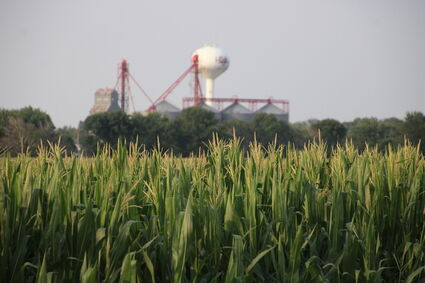Despite timely rain, drought persists
O'Brien, Clay counties still experiencing severe conditions
July 22, 2021
Recent precipitation has given local crops a boost, but more wet stuff is needed as the calendar approaches August.
ISU Extension agronomist Joel DeJong, whose territory covers O'Brien County, said most fields are being "spoon-fed" as the growing season marches towards fall harvest. Extension's precipitation monitor near Primghar has tallied 9.34" of rain since April 1, a departure from average of -3.78". The monitoring station at Sheldon was better, recording 10.15" of rain so far, 2.58" behind average.
Still, DeJong noted last week's rainfall was a godsend for parched fields.
"These totals, plus what has been stored in the soil, aren't reaching the necessary 22-25 inches needed for the season, but we are closer," he said. "We have been above normal for stress degree days so far. If we can keep that amount flat moving forward, that also would be positive for yield potential."
The latest report from the U.S. Drought Monitor released July 15 showed 40 Iowa counties were experiencing some degree of severe drought conditions. A majority of western O'Brien County was experiencing moderate drought, with the rest labeled severe. Clay County was one of 23 Iowa counties experiencing severe drought from border to border.
Numbers show the entire state could use a drink. According to the latest crop progress report from the USDA National Agricultural Statistics Service, Iowa topsoil moisture levels rated 6 percent very short, 27 percent short, 62 percent adequate and 5 percent surplus. Subsoil moisture levels rated 15 percent very short, 37 percent short, 46 percent adequate and 2 percent surplus.
Corn silking or beyond reached 60 percent, one day ahead of the five-year average. Corn in the dough stage reached 6 percent, three days ahead of normal. Iowa's corn condition was rated 68 percent good to excellent. Seventy-five percent of soybeans were blooming, six days ahead of the five-year average. Thirty percent of soybeans were setting pods, four days ahead of normal. Soybean condition was rated 66 percent good to excellent.
In addition to the drought, DeJong said rootworms have been a problem this year in continuous cornfields across his nine-county territory. Farmers should monitor silks to make sure adult beetles aren't clipping them and interfering with pollination, he said.


